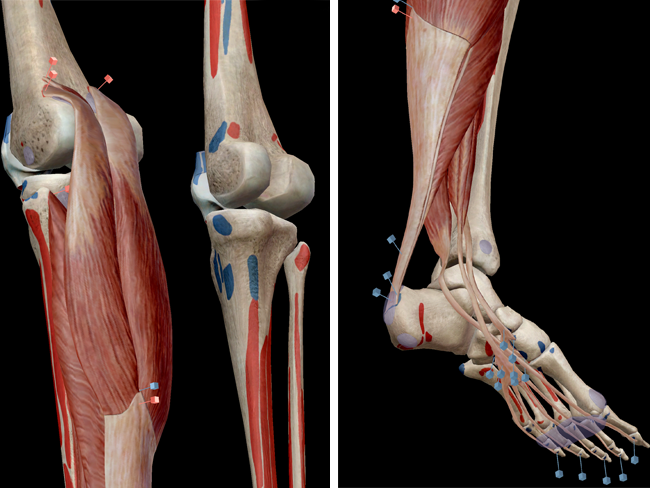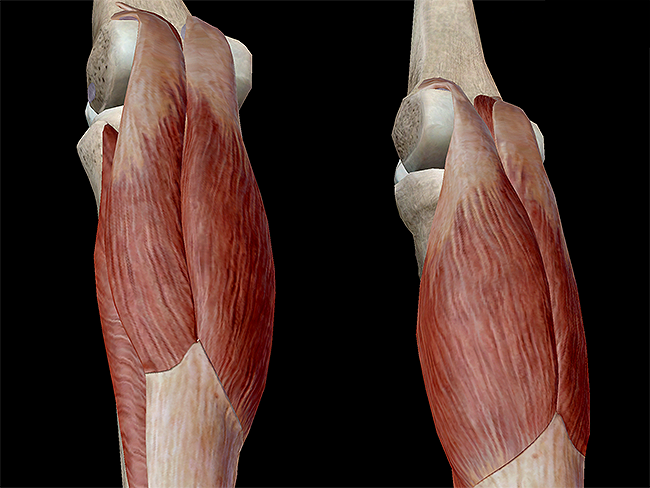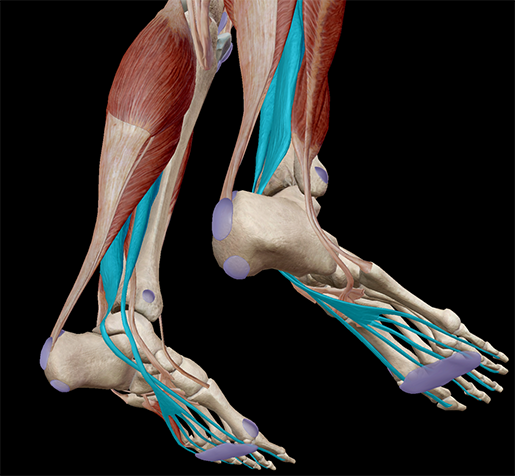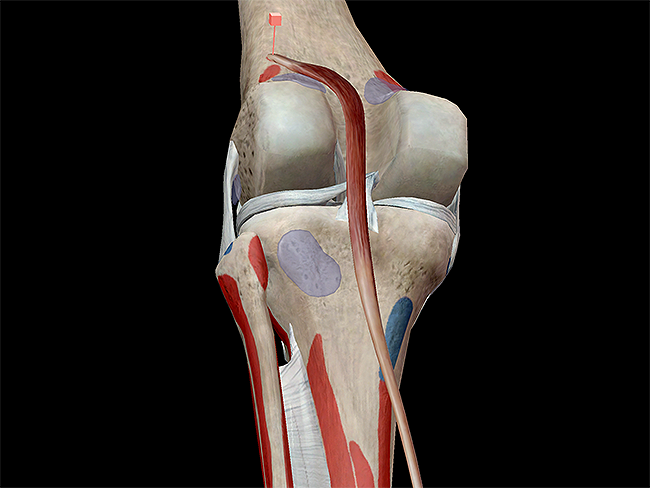Posted on 2/27/13 by Courtney Smith
Have you ever watched a ballet dancer stand en pointe (also known as relevé) and wondered how it was even possible? That's basically my mindset whenever I see a ballet performance: "You are a human, not a swan. Stop being so graceful."
Ballet dancers undergo rigorous training to perform—not just learning choreography, but training their skeletons to bend and stretch in extreme poses. Relevé is an example of extreme plantarflexion, in which the foot bends down toward the sole.
 Image captured using Muscle Premium
Image captured using Muscle Premium
There are quite a few muscles involved in this action. Let's take a look at them.
 Image captured from Muscle Premium
Image captured from Muscle Premium
The triceps surae is a group of muscles in the posterior compartment of the distal leg, made up of the gastrocnemius, soleus, and their common tendon, the Achilles tendon; the triceps surae is commonly known as the calf.
|
|
Origin |
Insertion |
|
Gastrocnemius |
Posterior surfaces of the femoral condyles |
Posterior surface of the calcaneus by way of the Achilles tendon |
|
Soleus |
Posterior surface of the head and upper third of the fibular shaft, and posterior tibia |
Posterior surface of the calcaneus by way of the Achilles tendon |
The tendon inserts onto the calcaneus, and during plantarflexion the tendon flexes, causing the bone to rise as the rest of the foot moves downward.
 Image captured from Muscle Premium.
Image captured from Muscle Premium.
It seems a given that plantarflexion, being a flex action, would have flexor muscles acting in it. The flexor hallucis longus and flexor digitorum longus muscles, both part of the posterior compartment of the distal leg, work not only in plantarflexion but also to flex the phalanges of the foot.
|
|
Origin |
Insertion |
|
Flexor hallucis longus |
Posterior fibula and inferior interosseous membrane |
Inferior surface of distal phalanx 1 |
|
Flexor digitorum longus |
Posterior surface of tibia |
Inferior surfaces of distal phalanges 2-5 |
The tibialis posterior acts in two muscle actions: plantarflexion and foot inversion. It is a deep muscle in the posterior compartment.
|
|
Origin |
Insertion |
|
Tibialis posterior |
Interosseous membrane, posterior surface of tibia, and medial surface of fibula |
Tuberosity on navicular and slips to cuneiforms (3), cuboid, and metatarsals 2-4 |
 Image captured from Muscle Premium.
Image captured from Muscle Premium.
I love the plantaris. It's so odd-looking—more of a whipcord than anything. It's a superficial muscle of the posterior compartment. Sometimes considered an accessory muscle, it consists of a small, thin muscle belly and a long, thin tendon.
The plantaris is an assist muscle, which means that it aids in providing steadiness in the act.
|
|
Origin |
Insertion |
|
Plantaris |
Supracondyle ridge of femur |
Posterior part of calcaneus (along with Achilles tendon) |
Imagine those ballet dancers for a second—do you think they learn how to relevé without some bumps and bruises along the way? Injuries associated with plantarflexion are very common. One of the most common injuries is ankle sprains, specifically straining the anterior talofibular ligament (ATF).
So, the next time you watch a ballet performance (or cringe your way through the movie Black Swan), think of all the muscles working together to lift those graceful dancers up onto their toes.
Be sure to subscribe to the Visible Body Blog for more anatomy awesomeness!
Are you an instructor? We have award-winning 3D products and resources for your anatomy and physiology course! Learn more here.
Additional Sources:
- Essential Ballet Foot Exercises (Russian Pointe)
- Richard Stockton College Athletics
When you select "Subscribe" you will start receiving our email newsletter. Use the links at the bottom of any email to manage the type of emails you receive or to unsubscribe. See our privacy policy for additional details.
©2025 Visible Body. All Rights Reserved.